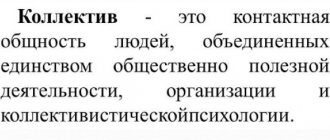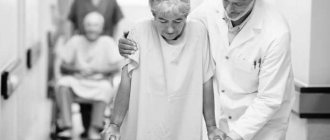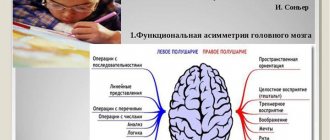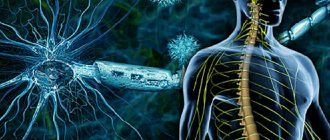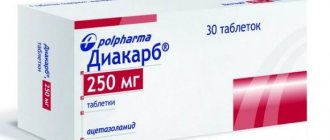Consultation via Skype or WhatsApp is available.
Computer biofeedback is a non-drug therapeutic and health technology, which is based on the universal principle of biofeedback (BFB) : a recorded physiological parameter to be corrected is transmitted to the monitor through an interface, and the patient, observing his physiological function in dynamics, learns to change it in in the right direction, developing self-regulation skills.
Using special equipment, a physiological parameter is recorded (heart rate, vascular tone, peripheral temperature, waves of electrical activity of the brain (EEG), etc.), amplified and converted into a form accessible to humans, in the form of sound signals and visual images. The necessary therapeutic effect is achieved by training and acquiring the skills of a person’s conscious influence on certain physiological indicators (heart rate, respiratory rate, peripheral body temperature, numerical ratio of EEG rhythms to each other, etc.), indirect influence on the autonomic nervous system , and then on the central nervous system, psyche.
Biofeedback is a complex psychophysiological process that allows you to learn to manage your physiological state, both individual systems (respiratory, cardiovascular) and the body as a whole.
With the help of a psychologist or psychotherapist, performing special verbal instructions and tasks, the patient develops and gradually masters the skills of self-control and self-regulation , i.e. acquires the ability to voluntarily change its physiological functions for the purpose of subsequent correction of existing mental disorders.
Why is stress dangerous?
Stress can disrupt the smooth life of a person of any age, social status and financial situation. Any changes in the usual way of life - both negative and positive - can cause a strong shock. Getting married, for example, can lead to no less stress than illness of a loved one, divorce, loss of a job, moving to another city or even to a new apartment.
Prolonged stress (for example, from constant overwork and excessive responsibility at work, family problems) is usually called “pre-disease”: if left untreated, it will certainly develop into serious health problems and can also lead to death.
The fact is that as emotional stress increases, a person’s adequacy of perception of reality sharply decreases. Thus, stress suppresses a person’s ability to find a way out of a difficult situation. As an analysis of various cases of death in extreme situations shows, most of them simply could not find their only chance to survive.
“ BFB ” is a method of therapy that uses the body’s hidden reserves. The purpose of the method is to develop a person’s self-regulation skills. In our clinic, treatment of neurological and many other diseases using biofeedback therapy is carried out by a highly qualified doctor - neurologist, neurophysiologist with many years of experience . With the help of training under the guidance of a competent specialist, patients will learn to relax, cope with fears, depression and fatigue.
Who can benefit from biofeedback?
The method is safe and can be used in the treatment of patients with almost any mental illness. With the help of biofeedback, psychovegetative disorders are treated, the development of cognitive functions of the brain in mental retardation and various organic lesions of the brain.
In addition, biofeedback has no contraindications and can be used in the treatment of children and pregnant women (elimination of anxiety, the ability to control the reactions of one’s own body at their vegetative level).
Our clinic already uses biofeedback therapy and correction complexes along with other methods of instrumental therapy (transcranial magnetic stimulation, light therapy, audiovisual stimulation). We conduct biofeedback training in Moscow, at an outpatient center, as well as at a country hospital, where it is possible to undergo an intensive course of treatment for a wide variety of disorders.
Interview with the Head of the Department of Functional Diagnostics of the Mental Health Clinic, neurophysiologist Ivashchenko O.I.:
| Read further: Biofeedback therapy for stress, addiction, phobias, and anxiety disorders. |
Do you need a consultation? Have questions? Call us
The essence of the method
Biofeedback-EEG therapy clearly demonstrates to us how we can use our consciousness to directly control our own body by analyzing signals from the nervous system.
Externally, the procedure differs little from REG and EEG studies. The biofeedback-EEG training technique includes taking an electroencephalogram, which records the main rhythms of the brain (alpha, beta, delta, tetarhythms). An EEG (electroencephalogram) assessment is carried out by an experienced neurologist-neurophysiologist, and a conclusion is given about the characteristics of brain rhythms and the distribution of biopotentials in various areas of the cerebral cortex. Depending on the indications, the necessary course of biofeedback-EEG training is selected (relaxing, activating, etc.).
During sessions, several electrodes are installed on problem (“trained”) areas on the surface of the head. Through a special device, the rhythms of certain areas of the brain influence video and audio signals, i.e. the patient can monitor the state of his own brain using sounds and images.
Essentially, this is treatment and training in one procedure, as a result of which the patient will learn to cope with stress, phobias, headaches and other psychosomatic manifestations.
The method allows you to optimize the normal physiological functions of the body and correct impaired ones in a natural, drug-free way. A prerequisite for biofeedback-EEG therapy is the patient’s motivation to achieve results. Thus, the use of Biofeedback transforms the patient from an object of medical intervention into an active and interested participant in the treatment process.
Duration of one session: 20-30 minutes. However, to achieve control and consolidate these skills, a fairly large number of sessions are required, on average 20-30. Upon completion of biofeedback-EEG training, the patient acquires the skills to control the state of his own brain, which allows him to use the body’s reserves with high efficiency.
Biofeedback-EEG therapy is a way to get rid of stress, psychosomatic disorders and negative emotions, gain self-confidence, and improve the quality of life without the help of drugs !
Biofeedback therapy for children
Biofeedback (BFB) therapy is a high-tech type of drug-free therapy in which children learn to consciously control involuntary physiological processes and organ functions, such as muscle tension, blood pressure or heart rate.
The idea behind biofeedback is that by using the power of the mind and awareness of what is happening inside the body, the patient can learn to gain more control over their health, since many pathological conditions are the result of muscle spasms, vasoconstriction, deterioration of microcirculation in tissues, insufficient deep breathing, the emergence and persistence of foci of chronic excitation in the cerebral cortex.
IN WHAT CASES IS BOS THERAPY RECOMMENDED FOR CHILDREN?
The biofeedback method is absolutely safe for the child, since the hardware does not have any effect on the body, only collecting data on physiological parameters. The biofeedback therapy method is practically free of contraindications and has no side effects or complications. Therefore, biofeedback therapy is indispensable not only for children, but also for expectant mothers. Children can undergo a course of play biofeedback therapy starting from 5-6 years of age (depending on the level of individual mental development).
Biofeedback sessions are used to prevent or treat headaches, migraines, chronic pain syndrome, urinary incontinence, hypertension, posture disorders, obsessive-compulsive disorder, hypermobility and attention deficit disorder, and panic attacks. Biofeedback therapy helps solve problems with a child’s poor adaptation to stress in kindergarten or school, attention problems, poor sleep, fears and anxieties, irritability and moodiness, constantly low mood, lack of energy, tics and stuttering, improve the condition of psychosomatic diseases, such as neurodermatitis, bronchial asthma.
HOW DOES BIOFEEDBACK WORK?
When a person raises his hand to wave hello to a friend or lifts his foot to take a step on the stairs, he consciously controls these actions. Other body functions such as heart rate, skin temperature and blood pressure are involuntarily controlled by the autonomic nervous system. A person usually does not think about making the heart beat faster. It simply occurs in response to a change in situation, such as during exercise or psychological stress.
The biofeedback method is a training of voluntary volitional control of body functions. Even those that a person usually does not consciously control. This control is carried out using sensors connected to a computer. They record and convert information about the state of human organs and systems into visual or auditory signals, and then allow one to comprehend and consciously change the operation of the controlled organ or system.
There are three common types of biofeedback:
- Thermal biofeedback based on skin temperature.
- Electromyography to measure muscle tension.
- Neurofeedback or biofeedback based on EEG parameters.
The range of movement of the chest during breathing, pressure, pulse, heart rate variability, skin resistance can also be additionally measured, depending on the task assigned to the therapy. During a biofeedback session, electrodes are attached to the skin, sensors are placed on a finger or earlobe, and cover the chest. These sensors send signals to a monitor, which converts changes in heart and respiratory parameters, blood pressure, skin temperature, sweating or muscle activity into audio-video information presented in a game form.
For example, deliberately raising the temperature of the skin of the hands or slowing down the heart will cause the balloon on the screen to rise higher, or the music to sound louder. The information displayed on the screen allows a person to learn to adjust the functioning of organs and systems in order to be healthy. The computer game format is familiar to children and, usually, they really like it.
A biofeedback therapist helps you practice relaxation exercises that can be used to control various body functions. For example, muscle relaxation can improve blood flow to the brain and eliminate headaches or irritability. Other relaxation exercises used in biofeedback treatment include:
- deep abdominal (diaphragmatic) breathing,
- progressive muscle relaxation - alternately tensing and then relaxing different muscle groups,
- guided meditation - focusing attention and abandoning negative emotions.
When a child learns to slow down the heart rate, lower blood pressure and relax muscle tension, he will learn to control objects on the screen of the biofeedback therapy device using the power of thought and attention. Eventually, with the help of a therapist, the child will learn to control the functions of his body without the help of biofeedback equipment.
FEATURES OF USING BOS THERAPY FOR VARIOUS DISEASES
Different types of biofeedback are used to monitor different body functions: Electromyogram (EMG) - measures muscle activity and muscle tension. Biofeedback therapy based on muscle tension control is used to correct postural disorders, flat feet, back pain, headaches, anxiety disorders, urinary and fecal incontinence, rehabilitation after injuries and surgical operations. By helping to locate and relax tight muscles, biofeedback can help relieve discomfort in conditions such as low back pain, abdominal pain, temporomandibular joint syndrome and fibromyalgia.
To form correct posture or prevent flat feet, biofeedback sensors are attached to certain muscles, and information from them is reflected on the computer screen. The child sees the result of the work of his own muscles - tension or relaxation, realizes whether he is performing the exercise correctly and corrects their condition.
Skin temperature biofeedback is used to treat headaches and Raynaud's disease. Monitoring of electromagnetic brain waves (EEG) can be used to correct attention deficit hyperactivity disorder (ADHD) and epilepsy. Consciously regulating the electrical resistance of the skin by controlling sweating helps control pain and anxiety. Heart rate variability management is used to treat anxiety, asthma, chronic obstructive pulmonary disease and cardiac arrhythmias.
Each biofeedback therapy session lasts approximately 30 minutes. Typically, at least 10 sessions are required to achieve lasting treatment results. Some conditions, such as hypertension, may require 20 or more sessions to improve the patient's condition.
HOW TO SIGN UP FOR BOS THERAPY CLASSES?
You can sign up for a consultation on biofeedback therapy by phone: +7
Scope of application of biofeedback-EEG therapy
The scope of application of the method can be conditionally divided into 2 large areas: clinical and non-clinical.
Clinical area
Biofeedback-EEG therapy is used for the treatment and prevention of many chronic diseases:
- hypertonic disease;
- increased blood pressure, vegetative-vascular dystonia;
- tension headaches, migraines;
- attention disorder and hyperactivity disorder in children and adolescents;
- nocturnal and daytime enuresis;
- shortness of breath syndrome, bronchial asthma;
- chronic stress;
- anxiety, fears and insomnia;
- psychosis, neurosis, neurasthenia;
- depression;
- stuttering;
- “chronic fatigue syndrome”, etc.
In the last few years, this list has been constantly expanding; biofeedback has been effectively used in the complex treatment of diabetes mellitus type I and II, irritable bowel syndrome , peptic ulcer, psychogenic erectile dysfunction, premenstrual syndrome, Raynaud's disease, Tourette's syndrome, multiple sclerosis, chronic pain syndromes, as well as for various postoperative disorders, in rehabilitation after a stroke, etc. In addition, biofeedback, the purpose of which is to prevent and stop the development of the disease, is one of the most promising methods of preventive medicine. The use of biofeedback-EEG methods at the “pre-disease” stage helps to stop or stabilize pathological development.
Non-clinical area
Biofeedback-EEG technology is successfully used in the pedagogical field to develop creative abilities and increase the effectiveness of learning, as well as in stress management (for example, to increase motivation and improve results in sports, art, etc.).
Also, the technique is indispensable for correcting the so-called. “borderline states” that arose against the background of chronic stress.
Biofeedback-EEG therapy sessions are perfectly combined with breathing exercises, trance techniques, auto-training, hypnosis, meditation, yoga, psychotherapy, etc.
At MedikCity, biofeedback-EEG technology is actively being implemented in the complex treatment of chronic diseases of the neurological, cardiological, gastroenterological, urological profiles, as well as in rehabilitation and preventive medicine.
Biofeedback-EEG therapy significantly improves a person’s standard of living. After the biofeedback course, your performance will increase, you will be able to do your work with less effort and with better results. Your resistance to stress will increase, balance will appear, relationships in the family and in the team will improve.
History of the creation of the feedback method
The biofeedback therapy method is actively used in foreign countries, in the USA, Spain, Israel and Switzerland, but in Russia and the CIS countries it is considered something exotic and not very clear. Although it was precisely the teachings of the famous Russian scientist I.P. Pavlov’s theory of reflexes became the “starting point” in the creation of this method of treatment. Developing Pavlov's teaching on reflexes, P.K. Anokhin proved that the principle of feedback is one of the most important ways to regulate a person’s adaptive reactions, stabilize his internal environment and mental balance.
Subsequently, these ideas were continued to be developed by scientists in the USA and Russia, who not only confirmed the effectiveness of influencing certain areas of the brain to create feedback, but also came up with a technology that allows such intervention to be carried out simply and safely.
Today, the effectiveness of the method has been confirmed by numerous studies, both abroad and in our country, as well as experimentally: the number of patients suffering from diseases such as Raynaud's syndrome, depression, hypertension, migraine, whose well-being has improved after using the feedback method, is constantly increasing .
The essence of the method
The reverse afferentation method is an instrumental, non-medicinal method of treating various diseases, based on a person’s ability to use the hidden reserves of his body. Technically, the procedure is similar to conducting an EEG or REG.
During biofeedback, continuous monitoring (in real time) of certain physiological indicators is carried out: heart rate and respiration rate, body temperature and indicators of electrical activity of the brain. On the monitor screen, all these indicators are combined into certain graphs, pictures or pieces of music. After this, the human psyche is influenced with the help of certain images, music or other stimuli. Sensors attached to the body record changes in physiological indicators in response to these irritations, and the patient learns to manage his consciousness and his reactions, remembering and controlling his condition.
The main goal of such therapy is to teach the patient to control his physiological state and “pass” unpleasant emotions through himself, preventing the development of depression, shortness of breath or other similar reactions. In this way, you can learn to control your breathing, heartbeat, and vascular tone, which, in turn, based on the feedback principle, will “give commands” to the brain, preventing panic, depression and other pathological conditions from developing.
Benefits of biofeedback
- rapid correction of psychosomatic disorders (changes during biofeedback sessions occur at the neuronal level);
- eliminating the very cause of the disease, and not its consequences;
- long-term preservation of self-regulation skills acquired during the course of biofeedback-EEG therapy;
- absence of side effects, since the biofeedback technique is non-drug;
- reducing the patient's need for medications;
- impact not on individual diseases, but on the main types of dysfunctions of the body’s regulatory systems - nervous, immune, humoral;
- absence of external influences on the patient;
- The treatment regimen is prescribed strictly individually, depending on the type and degree of the patient’s disorder;
- active inclusion in the treatment process of the patient himself, who, after each session, is provided with information about the learning results he has achieved and their exact quantitative assessment.

